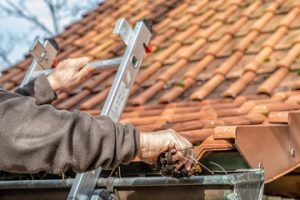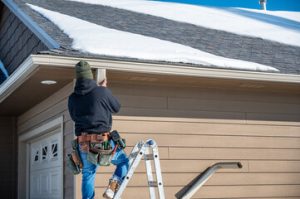Gutters are one of the most important features of any property’s exterior, yet they are often overlooked until water damage becomes unavoidable. Designed to direct rainwater away from the structure, gutters protect the foundation, siding, roofing, and landscaping from moisture-related problems. When gutters become clogged with leaves, dirt, twigs, and debris, they lose their ability to function properly, leading to serious issues that can compromise the safety and durability of the entire property. Implementing reliable Gutters Gainesville FL cleaning solutions is essential for preventing water damage, safeguarding the foundation, and ensuring long-term structural stability. Regular cleaning and maintenance not only extend the lifespan of the gutter system but also reduce the risk of costly repairs.

Gutter cleaning is more than just removing visible debris. It involves inspecting every part of the system to ensure water can flow freely through the channels and downspouts. When debris builds up inside the gutters, water begins to overflow, causing erosion, staining, wood rot, basement leaks, and mold growth. Over time, improper water management can weaken the foundation and lead to structural shifting. This is why property owners must prioritize gutter cleaning as a key component of their maintenance routine. A clean, well-functioning gutter system ensures that rainwater is properly diverted, protecting both the interior and exterior of the property.
The Importance of Routine Gutter Cleaning
Routine gutter cleaning is necessary for maintaining peak performance and preventing a range of moisture-related issues. Gutters are continuously exposed to natural elements, causing debris to accumulate throughout the year. Leaves from nearby trees, dirt from strong winds, and particles washed down from the roof all contribute to clogging. Without regular cleaning, these materials create blockages that disrupt the flow of rainwater. Water that cannot travel through the gutters will spill over the edges, leading to potential damage to the siding, insulation, and landscaping.
One of the most significant risks associated with clogged gutters is foundation damage. When water pools around the base of the property, it gradually seeps into the ground, causing soil movement and erosion. Excess moisture can weaken the foundation, resulting in cracks and structural instability. Once the foundation becomes compromised, repairs can be extremely expensive and time-consuming. By keeping gutters clean, property owners significantly reduce the risk of such problems and maintain the integrity of their building.
In addition to protecting the foundation, routine gutter cleaning helps preserve other exterior elements. Water overflowing from clogged gutters can cause the fascia boards to rot, discolor exterior walls, damage the roofline, and encourage mold growth. These issues not only weaken the structure but also diminish its aesthetic appeal. Routine maintenance keeps the property looking clean and well cared for, enhancing curb appeal and preserving long-term value.
Signs That Gutters Need Immediate Cleaning
While gutter cleaning should be performed regularly, certain warning signs indicate that immediate attention is needed. Recognizing these signs can prevent serious damage:
- Overflowing Water During Rainfall
- If water spills over the edges of the gutters during rain, this is a strong indication that there is a blockage preventing proper drainage.
- Sagging or Pulling Gutters
- Gutters filled with heavy debris may begin to sag or pull away from the roofline, signaling that the weight has become too much for the brackets to support.
- Plants or Moss Growing Inside the Gutters
- Vegetation growth is a clear sign that debris has accumulated and created a moist environment where plants can take root.
- Water Stains or Mold on Exterior Walls
- Visible signs of moisture on walls suggest that water is not being properly diverted away from the property.
- Basement Leaks or Dampness
- Excess moisture near the foundation can make its way into the basement, causing wet spots, odor, or mold growth.
- Insect or Pest Activity
- Clogged gutters often attract insects, birds, and small animals looking for shelter, which further obstructs water flow.
These warning signs should never be ignored, as they indicate that water damage may already be occurring or will soon begin if the issue isn’t addressed promptly.
Benefits of Professional Gutter Cleaning Services
While some property owners attempt to clean their gutters on their own, professional gutter cleaning services provide a more thorough, efficient, and safer solution. Experts have specialized tools and extensive experience that allow them to handle even the most challenging gutter problems. Professional cleaners not only remove visible debris but also clear downspouts, eliminate hidden blockages, and inspect the entire system for signs of wear or damage.
Safety is one of the primary reasons many property owners choose professional services. Gutter cleaning often involves climbing ladders, reaching high areas, and handling heavy debris, which can be risky without proper equipment and training. Professionals are equipped to manage these tasks safely and effectively, reducing the risk of accidents or injuries.
Another major benefit is the comprehensive inspection provided by experts. Professional cleaners can identify issues such as loose brackets, cracks, rust, sagging sections, and improper slopes that may not be visible to the untrained eye. By addressing these problems early, property owners can avoid major repairs in the future. Regular professional cleaning also helps extend the lifespan of the gutter system, ensuring reliable performance for years to come.
Many professional services also offer maintenance plans that include scheduled cleanings throughout the year. These plans ensure that gutters remain clean and functional no matter the season, providing property owners with consistent protection against water damage and foundation issues.
DIY Gutter Cleaning Tips for Property Owners
For those who prefer to handle gutter cleaning themselves, following proper safety and cleaning techniques is essential. While DIY solutions may be effective for minor tasks, they require careful planning and the right tools. Before starting the cleaning process, property owners should ensure they have a sturdy ladder, gloves, a bucket, a gutter scoop, and a hose with a pressure nozzle.
The first step is to remove large debris such as leaves and twigs from the gutter trough. Using hands or a scoop, these materials should be placed in a bucket or dropped onto a tarp for easy cleanup. Once the large debris is cleared, the next step is to flush the gutters with water to remove smaller particles and check for proper water flow. The downspouts should also be flushed to ensure that water is draining freely. If water backs up during flushing, this may indicate a blockage inside the downspout that requires further clearing.
While cleaning, property owners should pay attention to areas where gutters appear loose, damaged, or misaligned. Tightening screws, replacing brackets, or resealing small leaks can help improve performance. However, more complex repairs should be left to professionals to avoid improper adjustments that may worsen the problem.
Even with careful DIY maintenance, hiring professionals for periodic inspection is advisable to catch issues that may not be visible from the ground or during routine cleaning.
The Role of Gutter Guards in Preventing Clogs
Gutter guards have become a popular solution for minimizing debris buildup and reducing the frequency of gutter cleaning. These protective covers or screens sit on top of the gutters and allow water to flow in while blocking larger debris such as leaves and branches. Although gutter guards do not eliminate the need for maintenance, they significantly reduce the likelihood of clogs.
There are several types of gutter guards available, including mesh screens, foam inserts, and solid covers with angled openings. Each type offers unique benefits depending on the property’s needs and the amount of surrounding vegetation. Mesh guards are ideal for blocking small debris, while solid covers provide excellent protection against large leaves. Foam inserts sit inside the gutter and allow water to pass through while filtering out debris.
Professional installation of gutter guards ensures proper fit and performance. A well-installed guard system can dramatically improve water flow, reduce blockages, and minimize the risk of overflow during heavy rainfall. Property owners with frequent debris buildup or those seeking low-maintenance options benefit greatly from adding gutter guards to their gutter system.
How Regular Gutter Cleaning Prevents Foundation Issues
Foundation problems are among the most serious consequences of neglected gutters. When water flows freely through a clean system, it is directed away from the base of the property, preventing soil erosion and moisture penetration. However, clogged gutters force water to spill over the edges, causing it to pool near the foundation. Over time, this excess moisture weakens the soil, causing it to shift or wash away.
As the soil moves, the foundation may begin to settle unevenly, leading to cracks in walls, floors, and exterior surfaces. Water seepage can also make its way into basements or crawl spaces, creating an environment vulnerable to mold growth and structural decay. By maintaining clean gutters, property owners can prevent these costly issues and ensure that the foundation remains stable and secure.
Regular gutter cleaning supports proper drainage, reducing the chances of soil saturation and water infiltration. This simple maintenance task plays an essential role in preserving the strength and functionality of the property’s foundation.
Enhancing Property Value Through Gutter Maintenance
Clean and functional gutters not only protect a property from moisture damage but also contribute to its overall value. Prospective buyers and inspectors often look for signs of proper maintenance when evaluating a property. Clogged or damaged gutters signal neglect and raise concerns about potential foundation or roofing issues.
On the other hand, well-maintained gutters highlight responsible ownership and reduce concerns about water-related damage. A property with clean, efficient gutters is more appealing, especially to buyers who want reassurance that the structure has been properly cared for. This boosts curb appeal and adds long-term value to the investment.
Regular cleaning also helps maintain the appearance of the exterior. Overflowing water can stain walls, erode landscaping, and create unwanted streaks along the siding. Clean gutters prevent these issues and ensure the property always looks polished and well-maintained.
Reliable gutter cleaning solutions are essential for preventing water damage, protecting the foundation, and ensuring the long-term stability of any property. Whether performed through professional services or careful DIY techniques, regular gutter maintenance plays a critical role in preserving structural integrity and preventing costly repairs. By keeping gutters clear of debris, flushing downspouts, and addressing minor issues promptly, property owners can enjoy a safe, dry, and well-protected home or building. Adding gutter guards and scheduling routine inspections further enhances the system’s efficiency and longevity. With consistent care and attention, gutters become a powerful defense against the elements, giving property owners confidence and peace of mind year after year.
